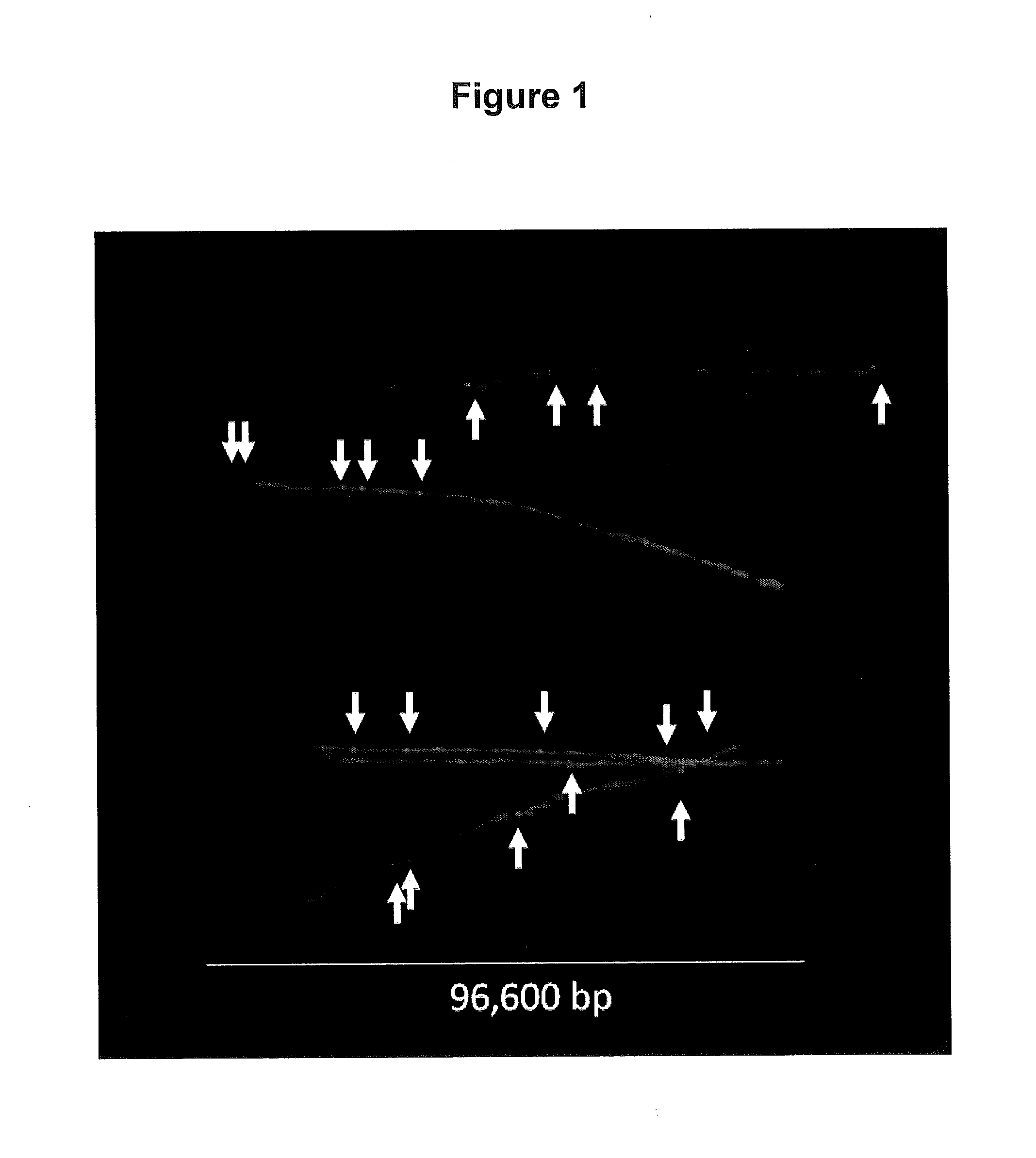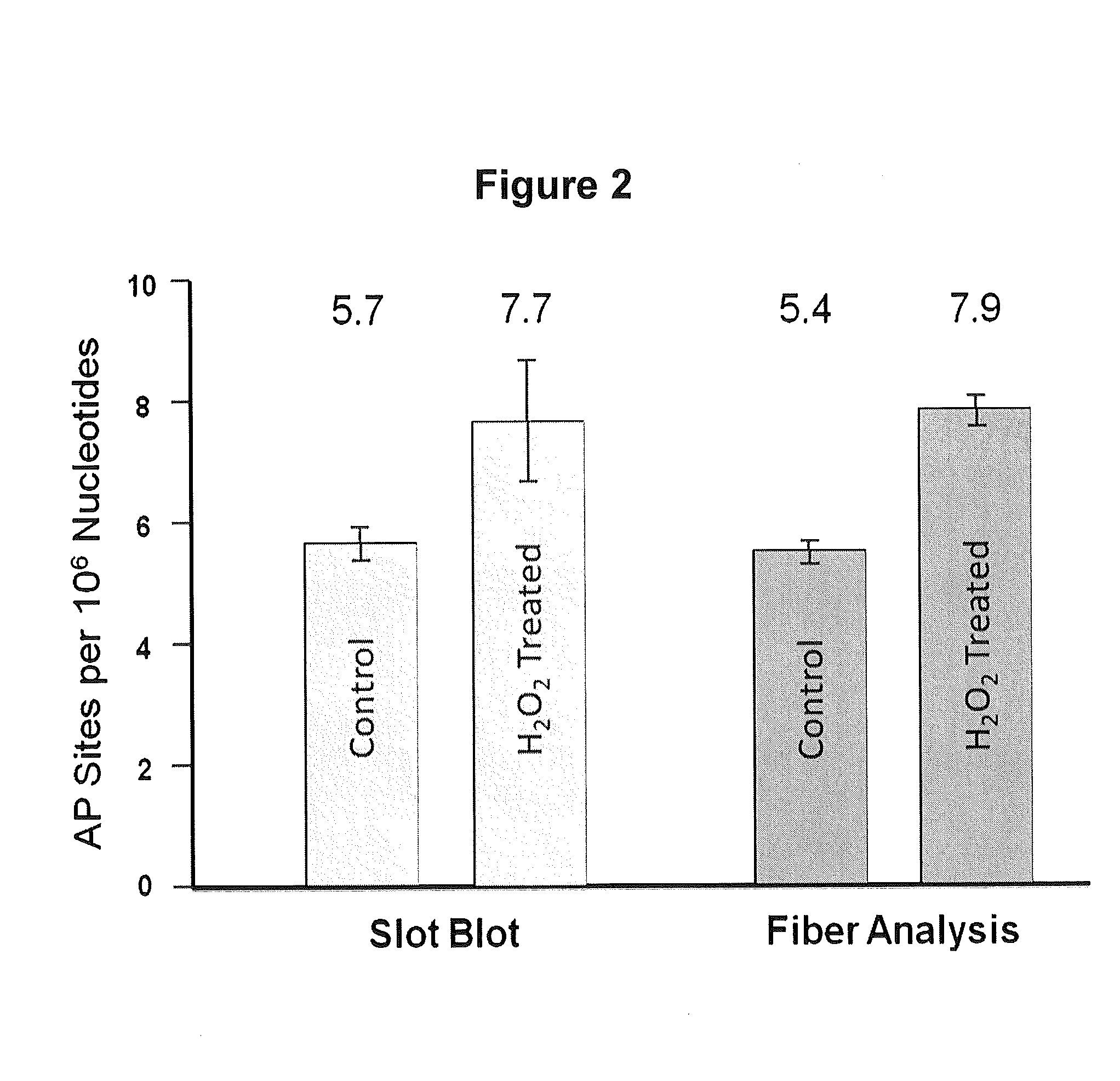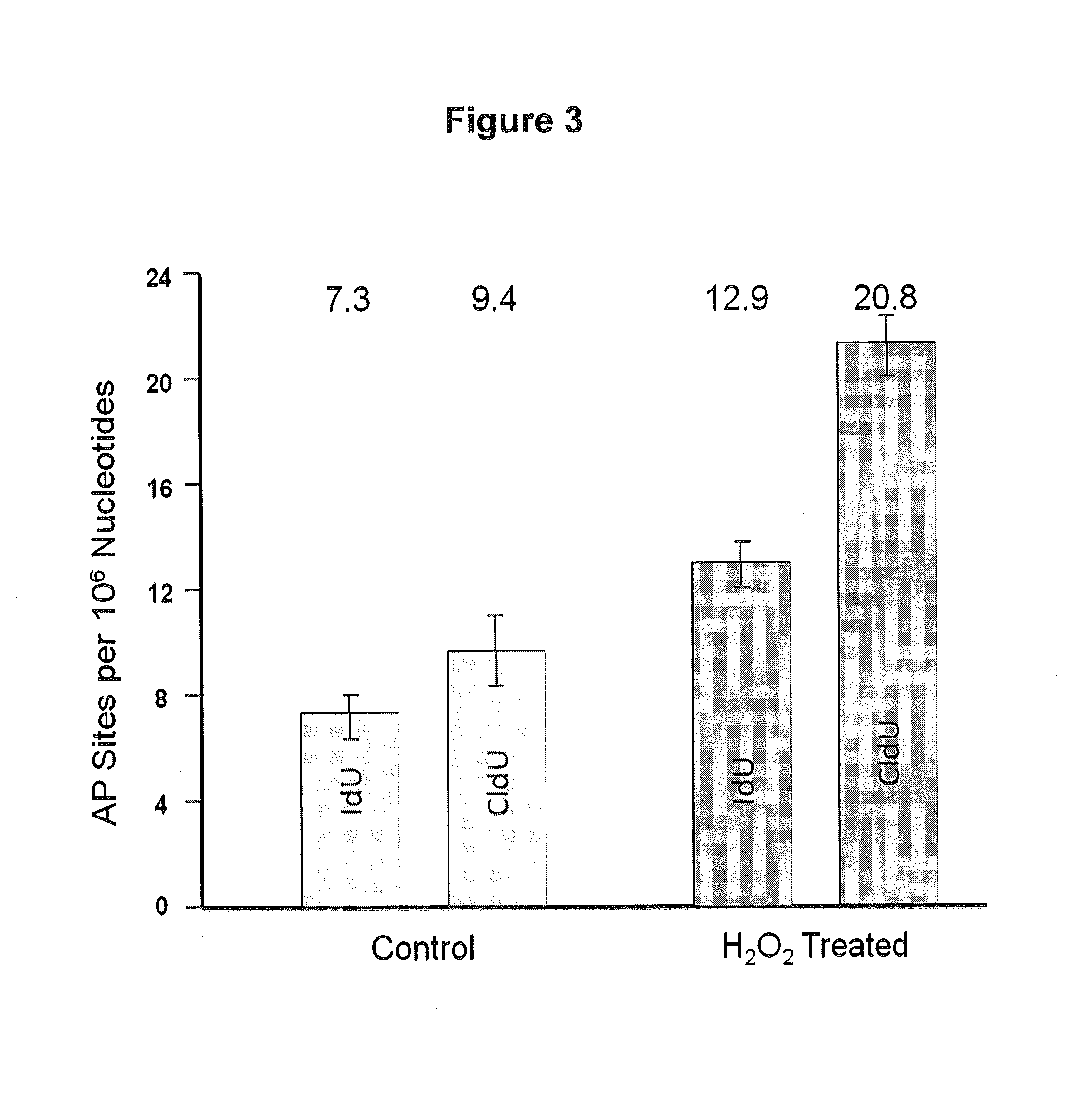Detection of Damage to DNA
- Summary
- Abstract
- Description
- Claims
- Application Information
AI Technical Summary
Benefits of technology
Problems solved by technology
Method used
Image
Examples
example 1
Materials and Methods
Cell Lines and Culture Condition
[0148]Avian DT40 cells (38, 39) were grown at 39.5° C., the normal Avian body temperature, in a humidified atmosphere supplemented with 5% CO2 as a suspension in RPMI-1640 (Invitrogen) supplemented with 10% fetal bovine serum (Sigma), 1% chicken serum (Sigma and Invitrogen), and containing 100 μg / ml penicillin and 100 μg / ml streptomycin (Invitrogen).
Detection of Endogenous AP Sites by Slot-Blot Analysis
[0149]DNA was isolated from DT40 cells in normal culture conditions or DT40 cells experiencing oxidative stress and processed for slot-blot analysis as described previously (2).
DNA Labeling and Fiber Spreading
[0150]The detection of areas undergoing replication in isolated DNA fibers was originally performed by Bensimon (40, 41) and later modified by Jackson and Pombo (42) to generate DNA fibers directly from lysed cells instead of using purified DNA. The DNA fiber extension methodology used in this paper is a modified version of the...
example 2
Results and Discussion
Average Number of AP Sites in DNA Fiber Spreads
[0165]To quantify the number of AP sites per 106 nt in the YOYO-labeled DNA fiber spreads, we determined the total amount of DNA (expressed in nucleotides, nt) in a given image by dividing the total green fluorescence intensity of the image by the average intensity per nt for that image, as outlined in Material and Methods (Example 1). We then determined the total number of AP sites located in well-defined DNA fibers in the image by counting the number of AP sites that co-localized to those fibers (see Material and Methods Section; Example 1) FIG. 1 presents a composite image of a number of isolated DNA fibers that were observed in our samples. Using this approach, we analyzed over 109 nt of DNA and determined that our sample of DNA from cells growing in normal culture conditions contained a basal value of 5.4 AP sites per 106 nt, while slot blot analysis gave a value of 5.7 AP sites per 106 nt (FIG. 2). The number...
example 3
Detection of Multiple Types of DNA Damage in DNA Fibers
[0172]DNA fibers can be used to assess two or more types of DNA damage. Logarithmically growing human normal human fibroblasts were pulsed with iododeoxyuridine (IdU), exposed to 50 μM hydrogen peroxide, and then pulsed with chlorodeoxyuridine (CIdU). Approximately 400 cells were applied to a glass slide and treated with lysis buffer as described in Example 1 after which the slides were placed at an angle (about 30 degrees from horizontal) causing the DNA fibers to flow out (combing). The slides were then fixed. Immunostaining with fluorescent antibodies (AlexaFlour 594 for IdU and Alexaflour 488 for CIdU) was then performed to detect the presence of the halogenated uracil with red staining indicating regions with incorporated IdU and green staining regions with incorporated CIdU. DNA damage was detected by first using a chemical reagent that tags the damage with biotin and then that tag is immunostained with fluorescent antibod...
PUM
| Property | Measurement | Unit |
|---|---|---|
| Angle | aaaaa | aaaaa |
| Electric potential / voltage | aaaaa | aaaaa |
| Frequency | aaaaa | aaaaa |
Abstract
Description
Claims
Application Information
 Login to View More
Login to View More - R&D
- Intellectual Property
- Life Sciences
- Materials
- Tech Scout
- Unparalleled Data Quality
- Higher Quality Content
- 60% Fewer Hallucinations
Browse by: Latest US Patents, China's latest patents, Technical Efficacy Thesaurus, Application Domain, Technology Topic, Popular Technical Reports.
© 2025 PatSnap. All rights reserved.Legal|Privacy policy|Modern Slavery Act Transparency Statement|Sitemap|About US| Contact US: help@patsnap.com



